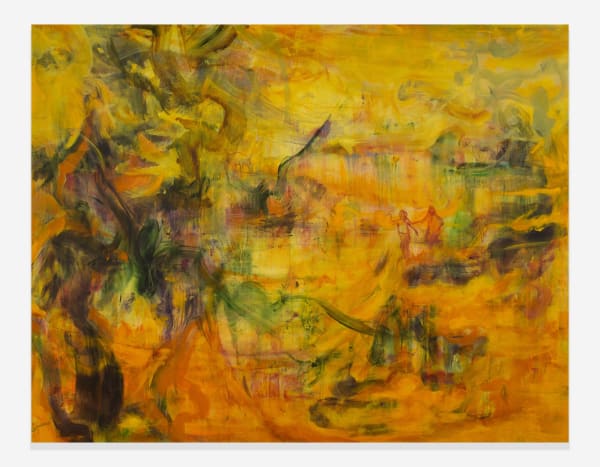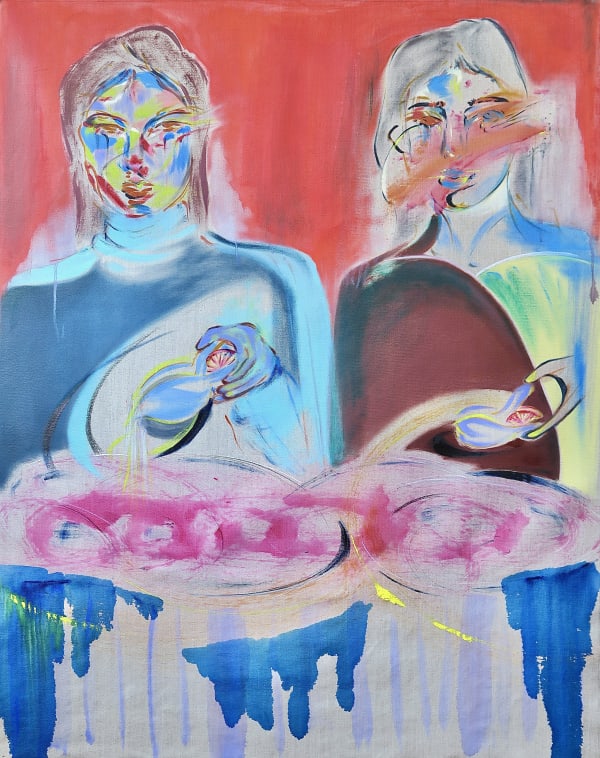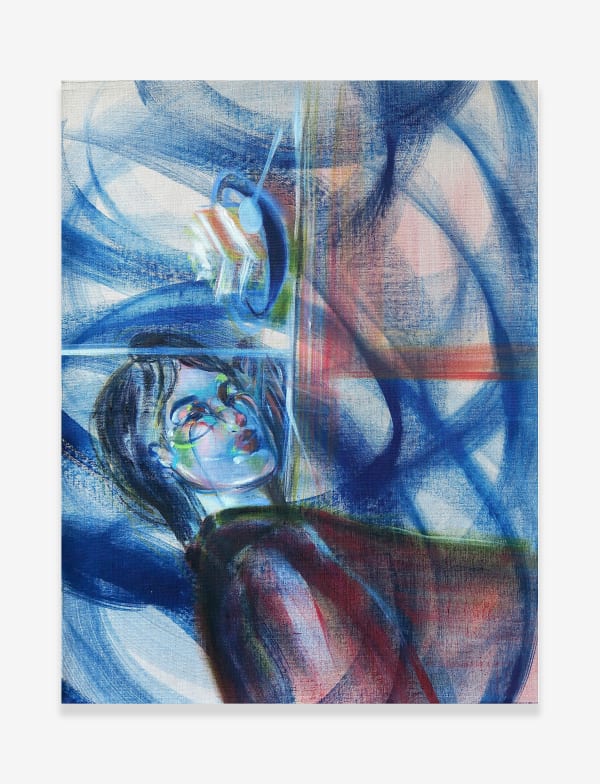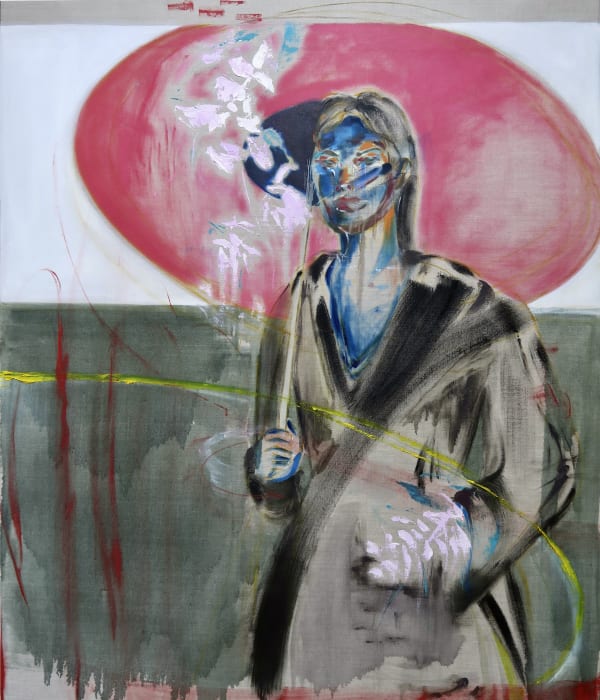Taking the title of Richard Matheson’s namesake novel, the exhibition “What Dreams May Come” brings together the works of Erica Mahinay, Yeonsu Ju, and Saba Farhoudnia to explore transition, energy exchange, and the fluidity of existence. Matheson’s novel crafts a vision of the afterlife that is deeply subjective and shaped by the individual’s mental and emotional state. Similarly, this exhibition navigates the transformative power of memory, dreams, and the transcendental nature of one’s experiences. The artists ultimately seek to understand themselves within the ever changing world through the action of making and offering.
Similarly, Saba Farhoudnia's paintings explore the concept of fluidity through the lens of personal and collective memory. As an artist navigating multiple cultural identities, she creates works that reflect the complexities of diaspora and the fluid boundaries of cultural belonging. Farhoudnia visualizes unfamiliar landscapes in her artistic practice, highlighting equality and our vulnerability to natural forces. By merging drawing and painting, she utilizes the textures of brushstrokes, geometric forms, and gestural marks. Her compositions blend figuration, grotesque elements, and dark comedy—gradually transitioning into abstract, garden-like spaces influenced by Persian miniatures.
Erica Mahinay navigates the boundary between painting and sculpture, crafting gestural works that engage with the human body while rooted in abstraction. Mahinay applies paint with brushes and hands-on canvas, creating both opaque and translucent areas. She employs dyeing techniques to saturate the fabric with color, drawing attention to the creation process. The works in the show capture the moments of change, inviting viewers to contemplate the fluidity of the self and the constant evolution of one’s physical and emotional states.
Yeonsu Ju, born in South Korea and now residing in London, draws influence from the spontaneous and forceful technique of Francis Bacon. She describes her paintings as "an imaginary space where you can meet lost loves." Often, her works depict social gatherings where characters are rendered with a few suggestive brushstrokes, creating dream-like and colorful scenes that serve as idealized versions of events from an unknown era. At the border of figuration and abstraction, Ju provides an intense experience with a startling economy of means. Her intermeshing blocks of color dissolve into each other, while human figures, characterized by thin black lines, evoke traditional Asian art forms.
In a world where boundaries are constantly being redrawn and redefined, this exhibition invites the viewers to contemplate adaptability and resilience.








